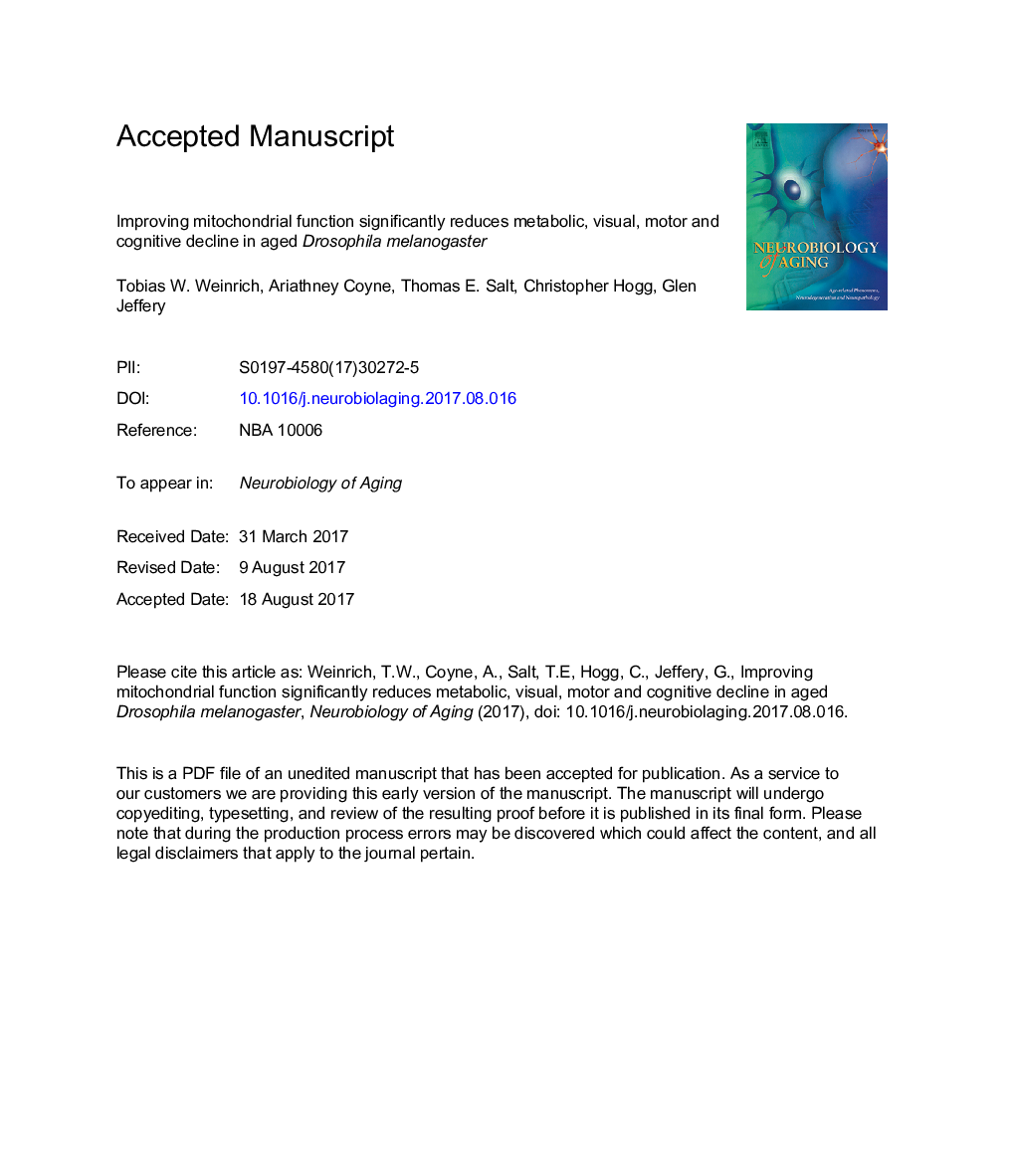| Article ID | Journal | Published Year | Pages | File Type |
|---|---|---|---|---|
| 4932525 | Neurobiology of Aging | 2017 | 39 Pages |
Abstract
Mitochondria play a major role in aging. Over time, mutations accumulate in mitochondrial DNA leading to reduced adenosine triphosphate (ATP) production and increased production of damaging reactive oxygen species. If cells fail to cope, they die. Reduced ATP will result in declining cellular membrane potentials leading to reduced central nervous system function. However, aged mitochondrial function is improved by long wavelength light (670Â nm) absorbed by cytochrome c oxidase in mitochondrial respiration. In Drosophila, lifelong 670-nm exposure extends lifespan and improves aged mobility. Here, we ask if improved mitochondrial metabolism can reduce functional senescence in metabolism, sensory, locomotor, and cognitive abilities in old flies exposed to 670Â nm daily for 1Â week. Exposure significantly increased cytochrome c oxidase activity, whole body energy storage, ATP and mitochondrial DNA content, and reduced reactive oxygen species. Retinal function and memory were also significantly improved to levels found in 2-week-old flies. Mobility improved by 60%. The mode of action is likely related to improved energy homeostasis increasing ATP availability for ionic ATPases critical for maintenance of neuronal membrane potentials. 670-nm light exposure may be a simple route for resolving problems of aging.
Related Topics
Life Sciences
Biochemistry, Genetics and Molecular Biology
Ageing
Authors
Tobias W. Weinrich, Ariathney Coyne, Thomas E. Salt, Christopher Hogg, Glen Jeffery,
